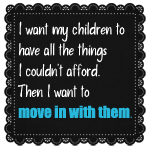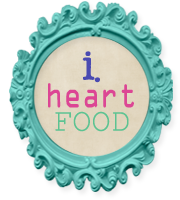BENEFITS OF THE CROCK
Some of the benefits you’ll find from dusting off that lovely retro-crock in the back of Grandma’s attic are:
■You can buy tougher (and less expensive) cuts of meat, since the crock acts as a tenderizer.
■Meat shrinks less when cooked in the crock, and doesn’t dry out.
■A crockery cooker doesn’t heat up the kitchen nearly as much as the stovetop or oven, so it’s a perfect hot weather cooking appliance.
■Frees up space in oven and stove top, great to use for parties, large gatherings, or doing a large cooking session for the freezer.
■Flavors have time to develop while your meal slowly cooks all day.
■Tofu tastes better cooked this way because it has time to soak up the flavors from broth, spices and other ingredients.
■Can be used on a buffet table for serving hot foods (soup, stew, sauces, meatballs in barbeque sauce, etc.).
CROCKERY COOKER TIPS
You’ll want to keep the following tips in mind when choosing and using your crockery cooker:
■Choose a crock with a removable liner. You’ll have more flexiblility in ways to use it, and it’s easier to clean.
■Buy a large one (6-quart capacity is good).
■Best if used for recipes with a high water content — things you’d normally prepare on the stovetop such as spaghetti sauce, soup, chili, stew.
■For best results, fill the crock at least half full with food and/or liquid.
■If you’re cooking something like a stew or soup, leave at least an inch empty (preferably two inches) at the top beneath the lid to allow for the food to bubble when it reaches a simmer.
■Don’t peek! Lifting the lid adds time to the cooking process by letting heat out. Add 15-20 minutes to the cooking time for each time you lift the lid to peek or stir.
■High altitudes need longer cooking times. Check with your crock’s Manufacturer’s User’s Guide for their recommendations.
■Brown meats ahead of time for additional color and flavor. Browning also removes some of the fat from the meat. Fatty meat cooks more quickly in the crock than lean meat.
■Meat and poultry cooks best if cut into smaller pieces or chunks rather than cooking as a whole roast or a whole chicken.
■Fish and seafood should be added near the end of the cooking time in seafood soups, stews and chowders.
■Vegetables such as carrots and potatoes, should be added to the bottom of the crock beneath any meats, etc. Hard vegetables need a longer cooking time, and the bottom is the first part of the cooker to heat up, so they’ll start cooking sooner.
■Stir in cheese at the end of cooking, or use processed cheese.
■Milk curdles during long cooking times. Add milk near end of cooking time (the last hour, or so).
■Add spices near the end of the cooking time.
■Stirring usually isn’t required during slow cooking on Low heat. You might want to stir once or twice during the last hour, but remember that every time you lift the lid, you’re adding to the cooking time. Two stirring sessions equal a minimum of half an hour longer cooking.
SUGGESTIONS FOR A SAFE AND SANE CROCK
The crock itself should be safe to use providing you don’t have an old one with frayed cords or some other defect. The following tips on safe user ideas can help keep your family healthy and the cook from being burned:
■Use fresh or completely thawed meats. Don’t add frozen meats directly to the crock.
■Be sure the crock is clean before using.
■Keep perishable foods refrigerated until ready to use.
■Always include liquids in all crockery cooking recipes.
■Remove the cover by opening away from your face. The steam is hot enough to burn badly.
■Don’t leave the cooker turned off with food in it for any length of time. Start cooking right away, and serve hot from the cooker. Don’t let food sit at room temperature to cool.
■Keep the crock covered while cooking. The lid on a crock doesn’t provide a tight seal (it isn’t suppose to), but it’s important to keep the lid in the center of the crock for best results.
■Don’t set the hot crock on a cold surface unless you put a hot pad, trivet or thick towel underneath.
■If the power goes out while you’re away from home with the crock running, throw the food away even if it looks hot and done. The power might have been off long enough for the food to cool, start growing bacteria, and then reheat by the time you arrived home.
■Don’t reheat leftovers in a crock, but you can use the crock as a food warmer for foods that have been cooked and heated in the oven or on the stovetop.
ABOUT THE AUTHOR:
–Deborah Taylor-Hough

















